Nvram ransomware (Removal Guide) - Decryption Methods Included
Nvram virus Removal Guide
What is Nvram ransomware?
Nvram ransomware is the version of a cryptovirus that uses contact email clifieb@tutanota.com in a pattern of file marker

Unfortunately, Nvram ransomware virus relies on proper encryption algorithms and makes victims' data useless by changing the original code and locking a file. Once that is done, .id-.[clifieb@tutanota.com].nvram appears on each file and indicates affected files for the user. Also, immediately after the file encryption FILES ENCRYPTED.txt shows up on the screen and placed in various folders with encrypted files alongside Info.hta that determines what the victim should do next.
| Name | Nvram ransomware |
|---|---|
| Type | Cryptovirus |
| Symptoms | Once malware gets on the system, it manages to choose the various common type of files and make them useless using the encryption process. To get the data back, users need to pay the ransom in a preferred type of cryptocurrency via the ransom note |
| Ransom note | FILES ENCRYPTED.txt and Info.hta are files placed on the desktop, in folders with encrypted files. Developers deliver the ransom-demanding message this way and can scare people into paying the ransom this way |
| File marker | .id-.[clifieb@tutanota.com].nvram appears at the end of every affected file and indicates damaged files for the victim |
| Contact email | clifieb@tutanota.com is the only thing that appears in the text file, so people are encouraged to directly contact the criminals, so the amount can be determined. Unfortunately, this contact with malicious actors can lead to additional infections or damage. There is no need to trust people behind such malicious programs |
| Distribution | Ransomware payload typically gets delivered with the help of phishing spam email campaigns or pirated software packages because malicious people inject infected files that only need to get on the system to trigger the drop of the malicious script[1] |
| Elimination | To remove Nvram ransomware, you need a proper anti-malware tool. Also, you should prepare yourself for a difficult process since this threat makes additional changes to affect the removal process and file decryption possibilities |
| System file repair | Since malware manages to get on various system folders and directories, you should run through those important places with a system repair tool like FortectIntego that may indicate and fix the damage for you |
Nvram ransomware is the infection that spreads on the system immediately after the payload drop and initiated malicious script. Files get automatically encrypted and other processes launched in the background when this happens, so the victim immediately is informed about the infection.
Unfortunately, the system runs pretty smooth during this Nvram ransomware infiltration, and only after the encryption, when ransom message appears on the screen, the victim knows what happened. When it is too late to avoid infiltration and virus damage, and the victim has either to pay, or recover files using any other method.
When Nvram ransomware delivers the following instructions for payment and making a Bitcoin wallet:
All your files have been encrypted!
All your files have been encrypted due to a security problem with your PC. If you want to restore them, write us to the e-mail clifieb@tutanota.com
Write this ID in the title of your message
In case of no answer in 24 hours write us to theese e-mails: jacklee73@mail.ua
You have to pay for decryption in Bitcoins. The price depends on how fast you write to us. After payment we will send you the decryption tool that will decrypt all your files.
Free decryption as guarantee
Before paying you can send us up to 1 file for free decryption. The total size of files must be less than 1Mb (non archived), and files should not contain valuable information. (databases,backups, large excel sheets, etc.)
How to obtain Bitcoins
The easiest way to buy bitcoins is LocalBitcoins site. You have to register, click ‘Buy bitcoins’, and select the seller by payment method and price.
https://localbitcoins.com/buy_bitcoins
Also you can find other places to buy Bitcoins and beginners guide here:
http://www.coindesk.com/information/how-can-i-buy-bitcoins/
Attention!
Do not rename encrypted files.
Do not try to decrypt your data using third party software, it may cause permanent data loss.
Decryption of your files with the help of third parties may cause increased price (they add their fee to our) or you can become a victim of a scam.
You shouldn't even consider making the payment because ransomware creators are only waiting for your interaction and revealed information. When you contact criminals, they may ask for more significant ransom or send you additional malware instead of decryption key or tool. You should remove Nvram ransomware instead and ignore all the messages from virus creators. Clean the machine, repair the damage, and fix corrupted system files with FortectIntego. Then you can focus on data recovery and move further to make your device virus-free. 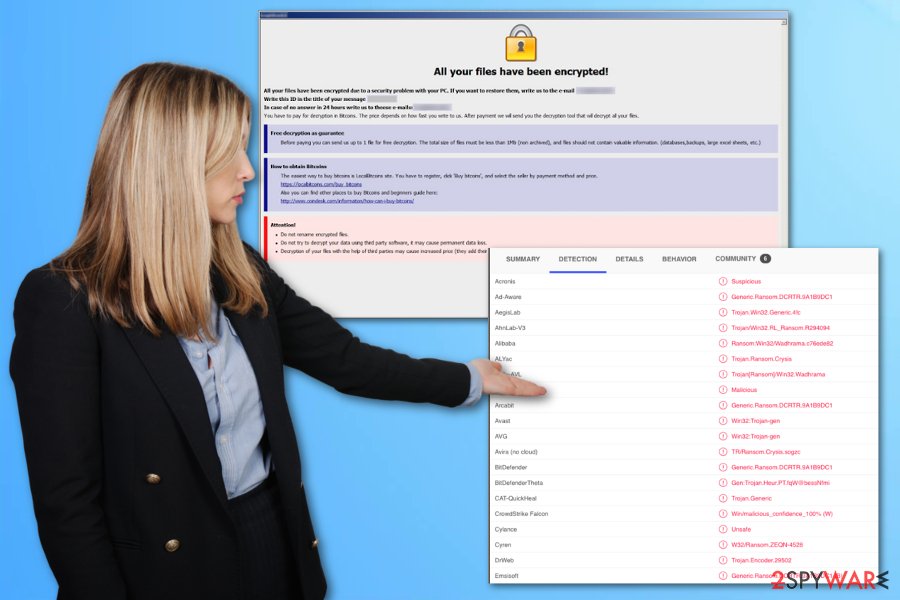
Then you need to employ the same AV tool and remove Nvram ransomware with all the related applications, files, or even malware. Make sure to double-check wit the same or a few different tools from the anti-malware category, so there is no risk of getting files encrypted again or damaging newly recover files.
To achieve the best results on your first try in Nvram ransomware termination, you should reboot the machine in Safe Mode and then run the AV tool to check the machine. This method allows the program to find all parts of the threat and get rid of the infection completely.
When Nvram ransomware plants other files and programs in the background data recovery gets difficult and the process of virus removal affected since those altered registry entries run the ransomware every time you reboot the machine. You should first fix the damage, so file recovery cannot end in lost or permanently damaged data.
Since there is no particular tool for Nvram ransomware decryption, you should either try to find a version of Dharma decryptor that possibly can work, seek help from malware researchers or depend on third-party software designed to restore various files, including encoded data. These methods and additional tips for virus termination are listed below the article for you. 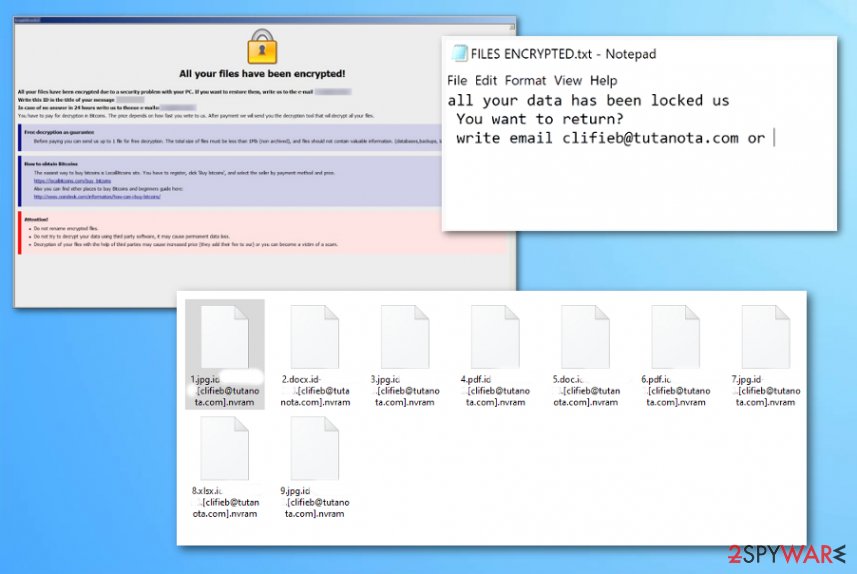
Infected attachments deliver a cryptovirus payload via spam email
Phishing campaigns, shady emails claiming about financial information and other deceptive techniques, misleading services like torrent sites, or pirating pages can deliver anything without your knowledge, including malicious code of the virus, and direct ransomware. There are some unique instances when malicious actors rely on particular campaigns, exploit kits, and system vulnerabilities, but this is the family that has more common and typical distribution methods.
The email comes directly to your box and can even go straight no normal box section, not spam email box, so you fall for the trick and open the notification. Experts[3] note that opening the email itself, in most cases, is not the step you need to take to get the infection, but interaction with links or attachments can lead you to malware infection and system damage. When you trigger the malicious macros on the file, the script is launched and executed immediately before your eyes.
You need to pay attention to potential red flags:
- suspicious senders;
- companies or services that you don't use sending you “Order information”;
- file attachments in MS document formats;
- “Enable the Content” button on the email or a document.
Avoid cryptovirus damage by eliminating Nvram ransomware virus as soon as possible
The best thing that you can do when dealing with Nvram ransomware virus – investing in a good system tool that is based on anti-malware functionalities. The AV program based on virus database and malicious behavior detection is the only tool that can terminate such type of cyber infection.
Manual Nvram ransomware removal is not possible because you cannot find and delete all related files yourself, professional program that checks various parts of the machine is the required help. By checking the system for malicious activities, the anti-malware program can indicate many files that you had no knowledge of.
Then you can remove Nvram ransomware, store encrypted files on a different device, and clean the malware damage. We offer to store encoded data on the external device, in case of a decryption tool developed later on. However, after the virus removal, you should go through the system with a system repair application like FortectIntego, SpyHunter 5Combo Cleaner, or Malwarebytes. These programs may find affected system parts and repair them without causing additional damage.
Getting rid of Nvram virus. Follow these steps
Manual removal using Safe Mode
Reboot the machine in Safe Mode with Networking and get rid of the threat using anti-malware tools
Important! →
Manual removal guide might be too complicated for regular computer users. It requires advanced IT knowledge to be performed correctly (if vital system files are removed or damaged, it might result in full Windows compromise), and it also might take hours to complete. Therefore, we highly advise using the automatic method provided above instead.
Step 1. Access Safe Mode with Networking
Manual malware removal should be best performed in the Safe Mode environment.
Windows 7 / Vista / XP
- Click Start > Shutdown > Restart > OK.
- When your computer becomes active, start pressing F8 button (if that does not work, try F2, F12, Del, etc. – it all depends on your motherboard model) multiple times until you see the Advanced Boot Options window.
- Select Safe Mode with Networking from the list.
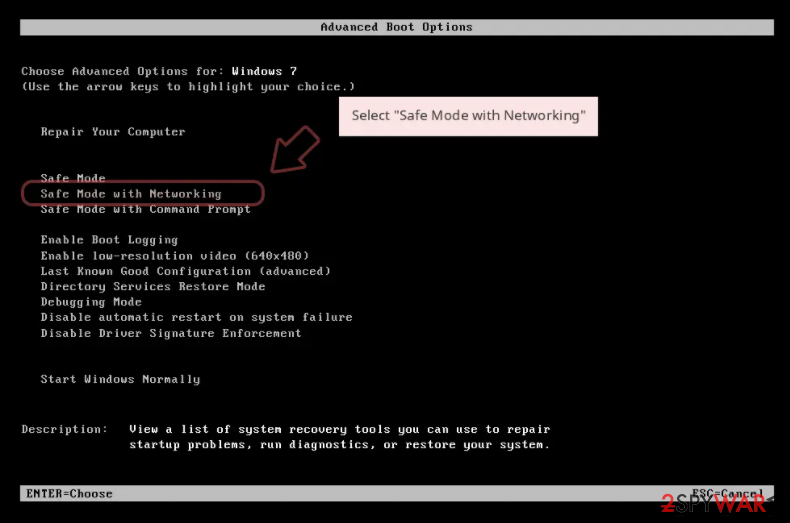
Windows 10 / Windows 8
- Right-click on Start button and select Settings.
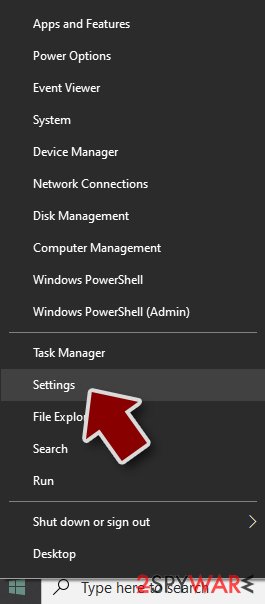
- Scroll down to pick Update & Security.
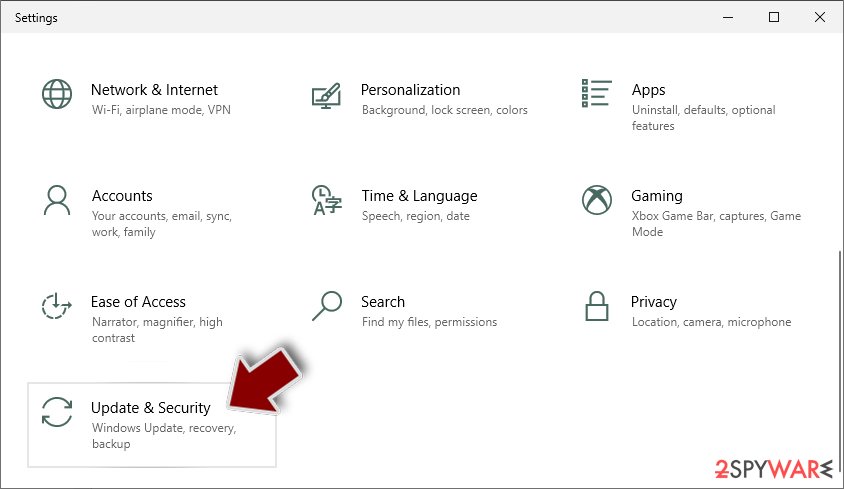
- On the left side of the window, pick Recovery.
- Now scroll down to find Advanced Startup section.
- Click Restart now.
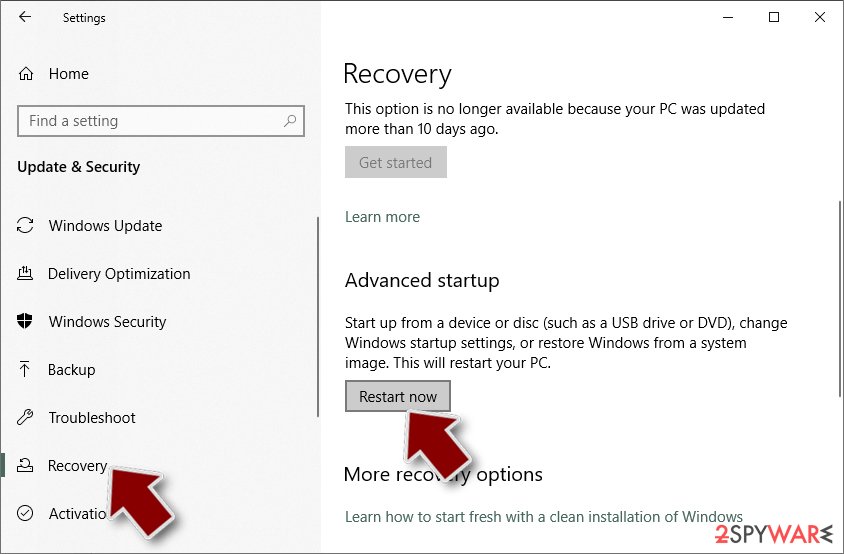
- Select Troubleshoot.
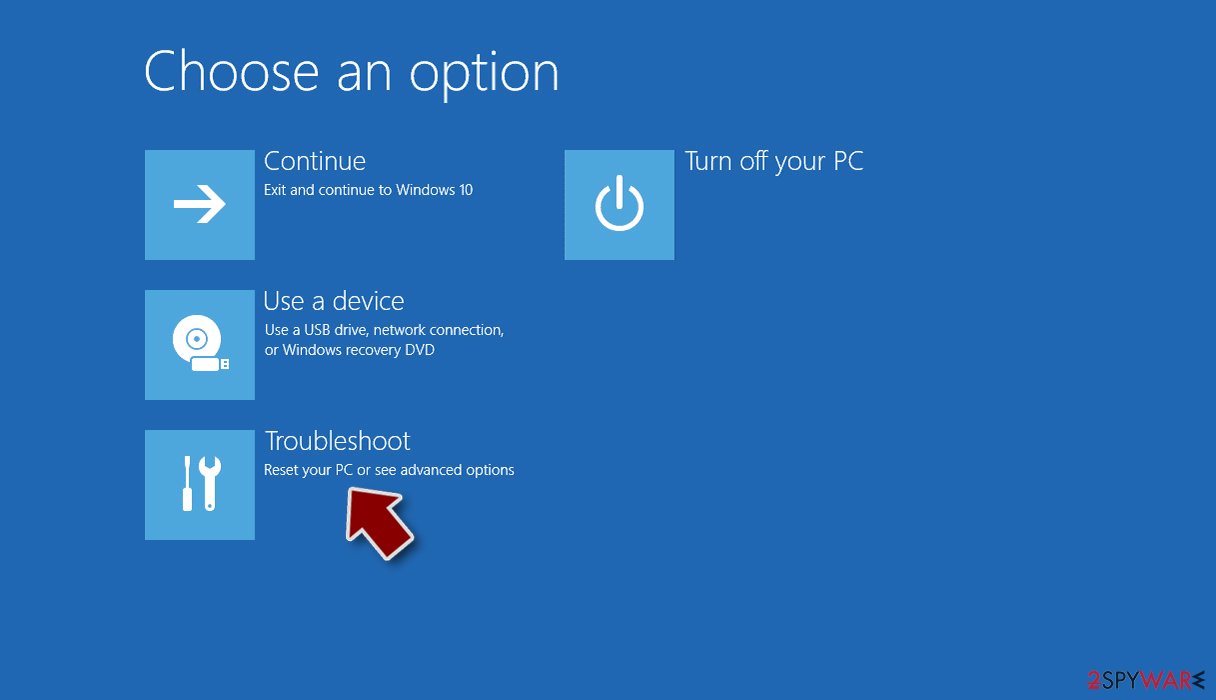
- Go to Advanced options.
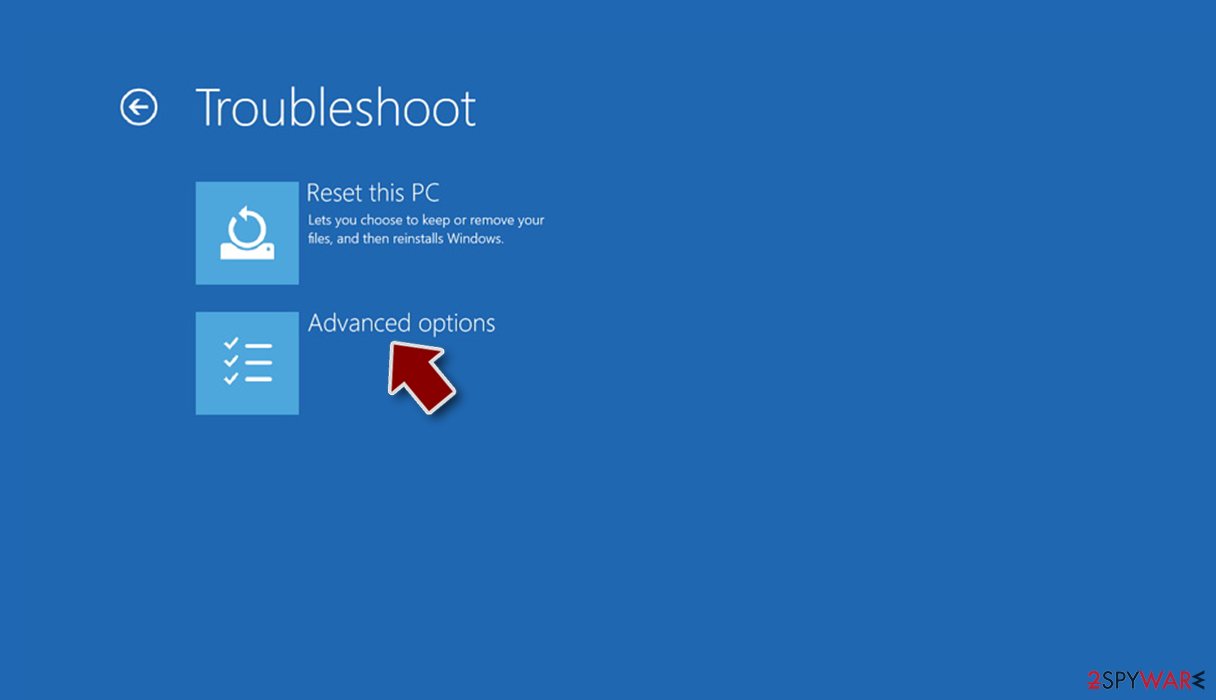
- Select Startup Settings.
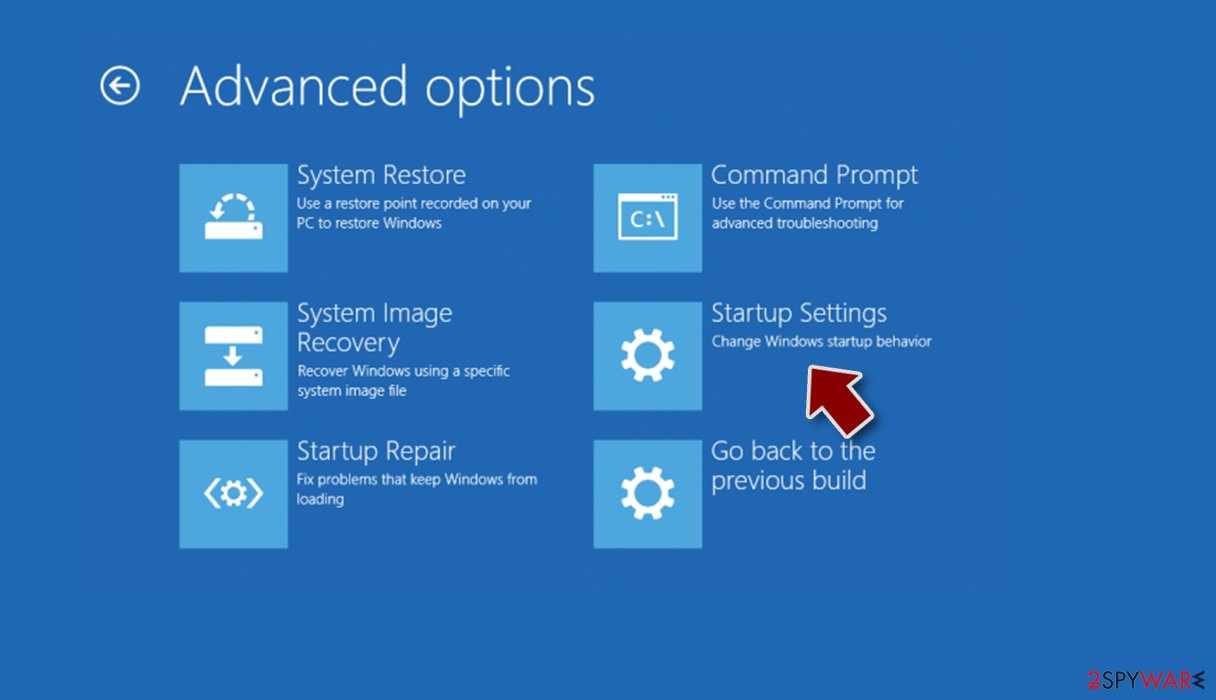
- Press Restart.
- Now press 5 or click 5) Enable Safe Mode with Networking.
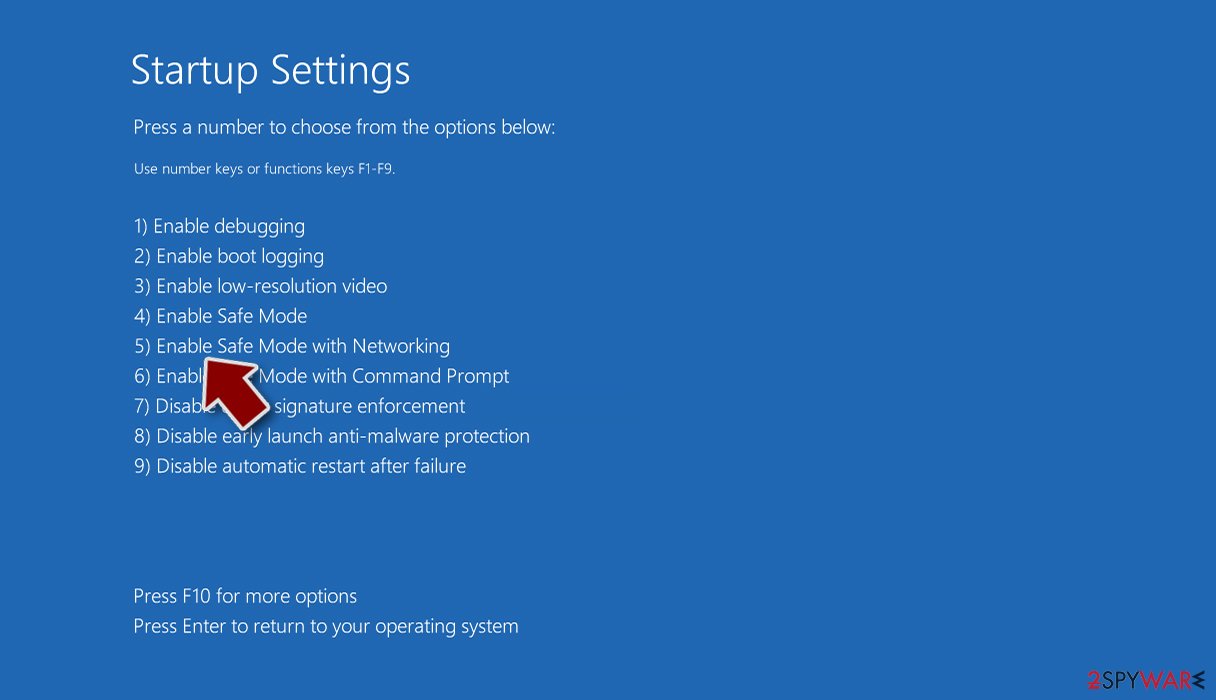
Step 2. Shut down suspicious processes
Windows Task Manager is a useful tool that shows all the processes running in the background. If malware is running a process, you need to shut it down:
- Press Ctrl + Shift + Esc on your keyboard to open Windows Task Manager.
- Click on More details.
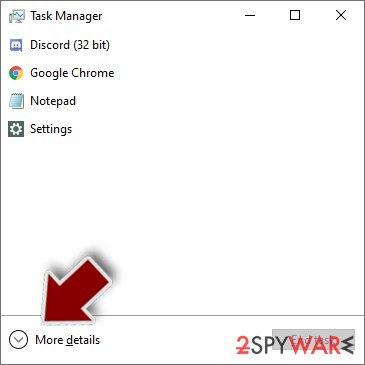
- Scroll down to Background processes section, and look for anything suspicious.
- Right-click and select Open file location.
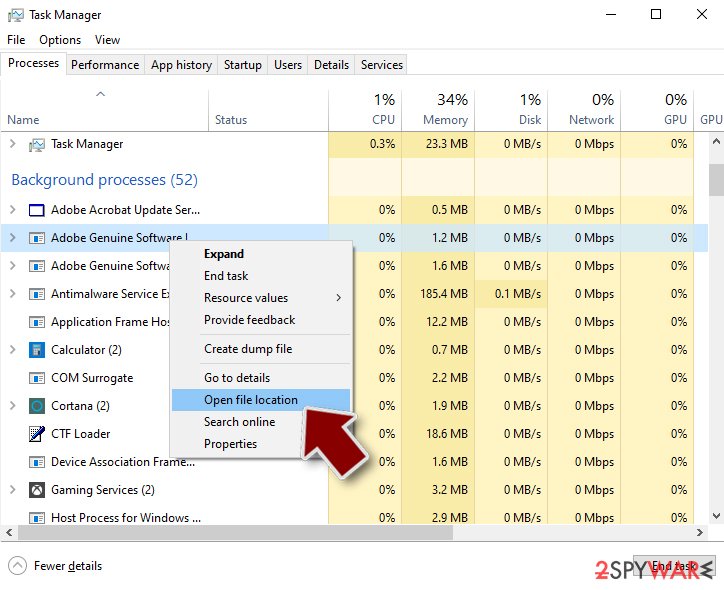
- Go back to the process, right-click and pick End Task.
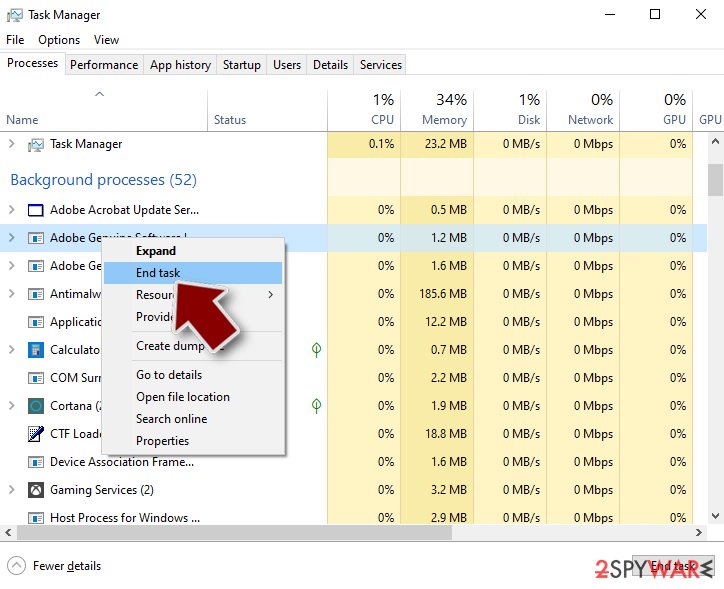
- Delete the contents of the malicious folder.
Step 3. Check program Startup
- Press Ctrl + Shift + Esc on your keyboard to open Windows Task Manager.
- Go to Startup tab.
- Right-click on the suspicious program and pick Disable.
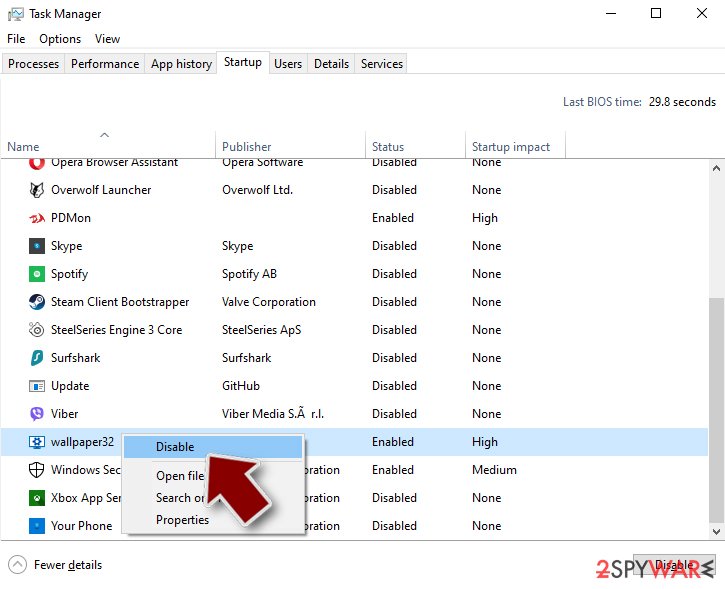
Step 4. Delete virus files
Malware-related files can be found in various places within your computer. Here are instructions that could help you find them:
- Type in Disk Cleanup in Windows search and press Enter.
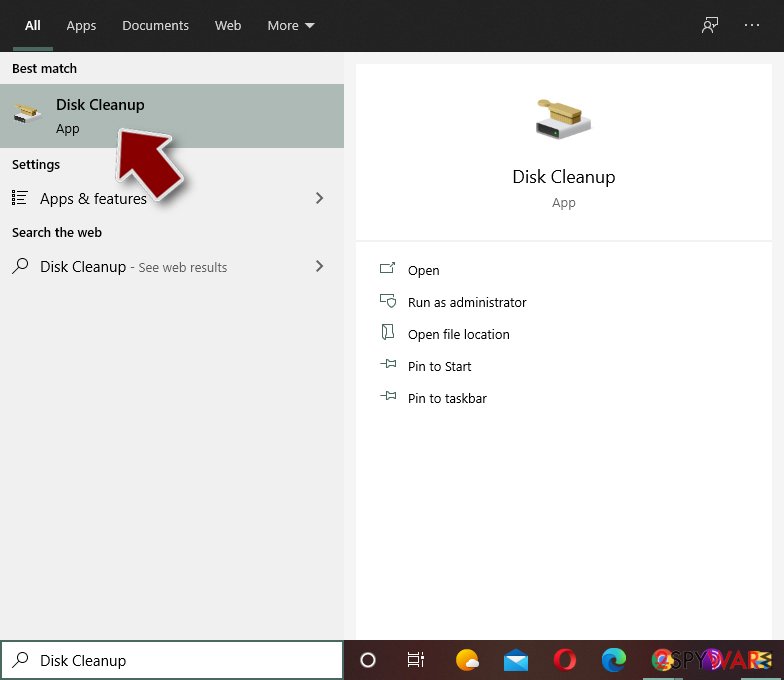
- Select the drive you want to clean (C: is your main drive by default and is likely to be the one that has malicious files in).
- Scroll through the Files to delete list and select the following:
Temporary Internet Files
Downloads
Recycle Bin
Temporary files - Pick Clean up system files.
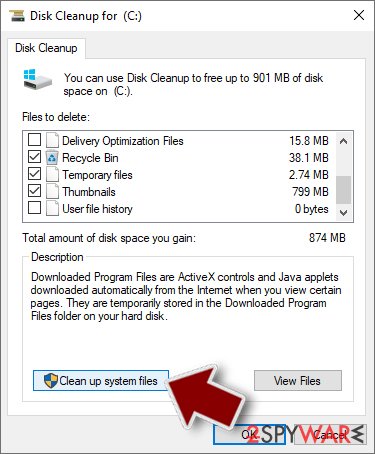
- You can also look for other malicious files hidden in the following folders (type these entries in Windows Search and press Enter):
%AppData%
%LocalAppData%
%ProgramData%
%WinDir%
After you are finished, reboot the PC in normal mode.
Remove Nvram using System Restore
You can try to enable System Restore feature, so Nvram ransomware gets terminated
-
Step 1: Reboot your computer to Safe Mode with Command Prompt
Windows 7 / Vista / XP- Click Start → Shutdown → Restart → OK.
- When your computer becomes active, start pressing F8 multiple times until you see the Advanced Boot Options window.
-
Select Command Prompt from the list

Windows 10 / Windows 8- Press the Power button at the Windows login screen. Now press and hold Shift, which is on your keyboard, and click Restart..
- Now select Troubleshoot → Advanced options → Startup Settings and finally press Restart.
-
Once your computer becomes active, select Enable Safe Mode with Command Prompt in Startup Settings window.

-
Step 2: Restore your system files and settings
-
Once the Command Prompt window shows up, enter cd restore and click Enter.

-
Now type rstrui.exe and press Enter again..

-
When a new window shows up, click Next and select your restore point that is prior the infiltration of Nvram. After doing that, click Next.


-
Now click Yes to start system restore.

-
Once the Command Prompt window shows up, enter cd restore and click Enter.
Bonus: Recover your data
Guide which is presented above is supposed to help you remove Nvram from your computer. To recover your encrypted files, we recommend using a detailed guide prepared by 2-spyware.com security experts.If your files are encrypted by Nvram, you can use several methods to restore them:
Data Recovery Pro is the program needed for Nvram ransomware virus affected files
Data can get recovered with the program when ransomware encrypts files or user accidentally deletes them
- Download Data Recovery Pro;
- Follow the steps of Data Recovery Setup and install the program on your computer;
- Launch it and scan your computer for files encrypted by Nvram ransomware;
- Restore them.
Windows Previous Versions as a feature for data restore
Unfortunately, Nvram ransomware encrypted files can only get recovered with Windows Previous Versions when System Restore gets enabled before
- Find an encrypted file you need to restore and right-click on it;
- Select “Properties” and go to “Previous versions” tab;
- Here, check each of available copies of the file in “Folder versions”. You should select the version you want to recover and click “Restore”.
ShadowExplorer feature that can help to restore affected data
When Shadow Volume Copies are left untouched, you can use ShadowExplorer and repair those encrypted files
- Download Shadow Explorer (http://shadowexplorer.com/);
- Follow a Shadow Explorer Setup Wizard and install this application on your computer;
- Launch the program and go through the drop down menu on the top left corner to select the disk of your encrypted data. Check what folders are there;
- Right-click on the folder you want to restore and select “Export”. You can also select where you want it to be stored.
Decryption tool for Nvram ransomware is not developed, but you can try to use Dharma decrypter
This is the place where you can find information about possible Dharma decryption tools
Finally, you should always think about the protection of crypto-ransomwares. In order to protect your computer from Nvram and other ransomwares, use a reputable anti-spyware, such as FortectIntego, SpyHunter 5Combo Cleaner or Malwarebytes
How to prevent from getting ransomware
Access your website securely from any location
When you work on the domain, site, blog, or different project that requires constant management, content creation, or coding, you may need to connect to the server and content management service more often. The best solution for creating a tighter network could be a dedicated/fixed IP address.
If you make your IP address static and set to your device, you can connect to the CMS from any location and do not create any additional issues for the server or network manager that needs to monitor connections and activities. VPN software providers like Private Internet Access can help you with such settings and offer the option to control the online reputation and manage projects easily from any part of the world.
Recover files after data-affecting malware attacks
While much of the data can be accidentally deleted due to various reasons, malware is one of the main culprits that can cause loss of pictures, documents, videos, and other important files. More serious malware infections lead to significant data loss when your documents, system files, and images get encrypted. In particular, ransomware is is a type of malware that focuses on such functions, so your files become useless without an ability to access them.
Even though there is little to no possibility to recover after file-locking threats, some applications have features for data recovery in the system. In some cases, Data Recovery Pro can also help to recover at least some portion of your data after data-locking virus infection or general cyber infection.
- ^ Potential Targeted Attack Uses AutoHotkey and Malicious Script Embedded in Excel File to Avoid Detection. Trendmicro. Security intelligence blog.
- ^ NVRAM virus payload detection rate. Virustotal. Online virus scanner.
- ^ Udenvirus. Udenvirus. Spyware related news.







